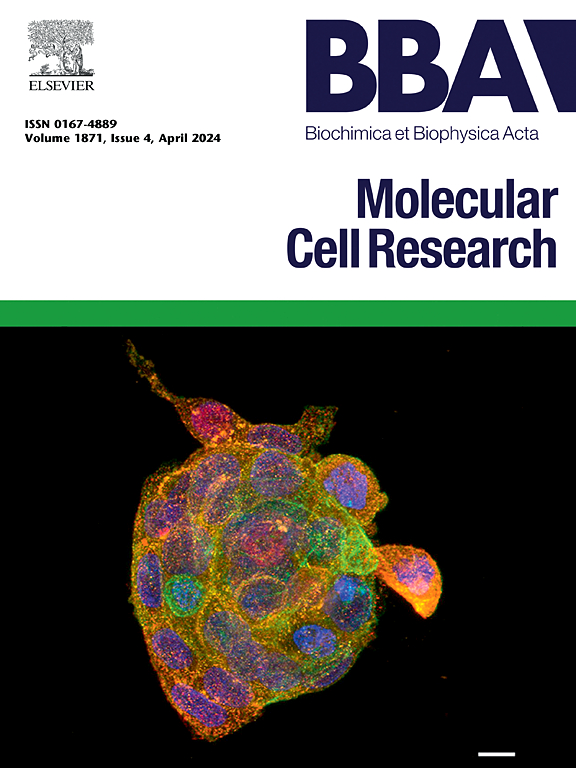Reduced store operated calcium entry contributes to autophagy mediated escape of prostate cancer to oxaliplatin treatment
IF 4.6
2区 生物学
Q1 BIOCHEMISTRY & MOLECULAR BIOLOGY
Biochimica et biophysica acta. Molecular cell research
Pub Date : 2025-04-04
DOI:10.1016/j.bbamcr.2025.119953
引用次数: 0
Abstract
Oxaliplatin, a third-generation platinum-based chemotherapeutic drug, induces cell cycle arrest and apoptosis in prostate cancer treatment. However, both intrinsic and acquired resistance mechanisms limit its therapeutic efficacy. Notably, chemotherapeutic agents often induce autophagy—a cellular recycling process—that can contribute to drug resistance. Calcium (Ca2+) signalling plays a pivotal role in regulating cell fate. However, the involvement of Ca2+ and Ca2+ channels in oxaliplatin resistance within prostate cancer cells remains controversial and poorly understood. In this study, we demonstrate that oxaliplatin treatment enhances autophagy in prostate cancer cells. Concurrently, oxaliplatin modulates the expression of key proteins involved in store-operated calcium entry (SOCE): it upregulates Orai3 channels while downregulating Orai1 and Stim1. These alterations result in diminished SOCE activity, contributing to an apoptosis-resistant phenotype. Importantly, we found that targeting Orai3 expression and inhibiting autophagy sensitizes prostate cancer cells to oxaliplatin-induced apoptosis. Our findings suggest that combining Orai3 downregulation with autophagy inhibition may enhance the efficacy of oxaliplatin in treating prostate cancer. This combinatorial approach could hold potential for overcoming resistance and improving therapeutic outcomes.

求助全文
约1分钟内获得全文
求助全文
来源期刊
CiteScore
10.00
自引率
2.00%
发文量
151
审稿时长
44 days
期刊介绍:
BBA Molecular Cell Research focuses on understanding the mechanisms of cellular processes at the molecular level. These include aspects of cellular signaling, signal transduction, cell cycle, apoptosis, intracellular trafficking, secretory and endocytic pathways, biogenesis of cell organelles, cytoskeletal structures, cellular interactions, cell/tissue differentiation and cellular enzymology. Also included are studies at the interface between Cell Biology and Biophysics which apply for example novel imaging methods for characterizing cellular processes.

 求助内容:
求助内容: 应助结果提醒方式:
应助结果提醒方式:


